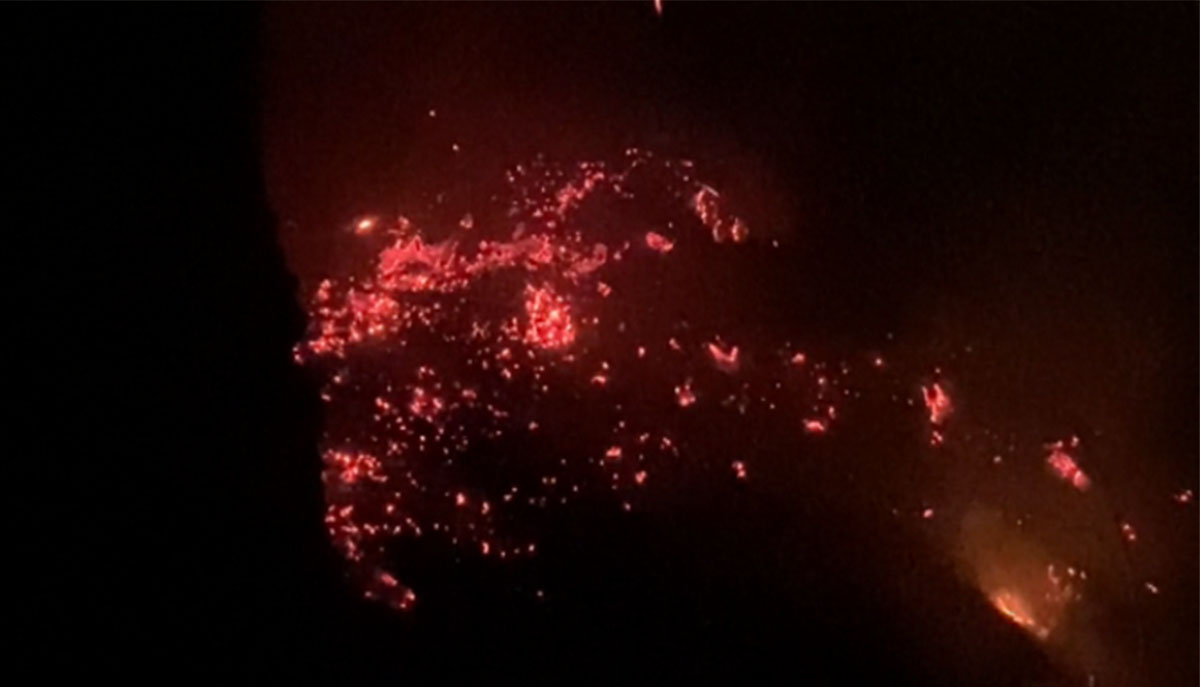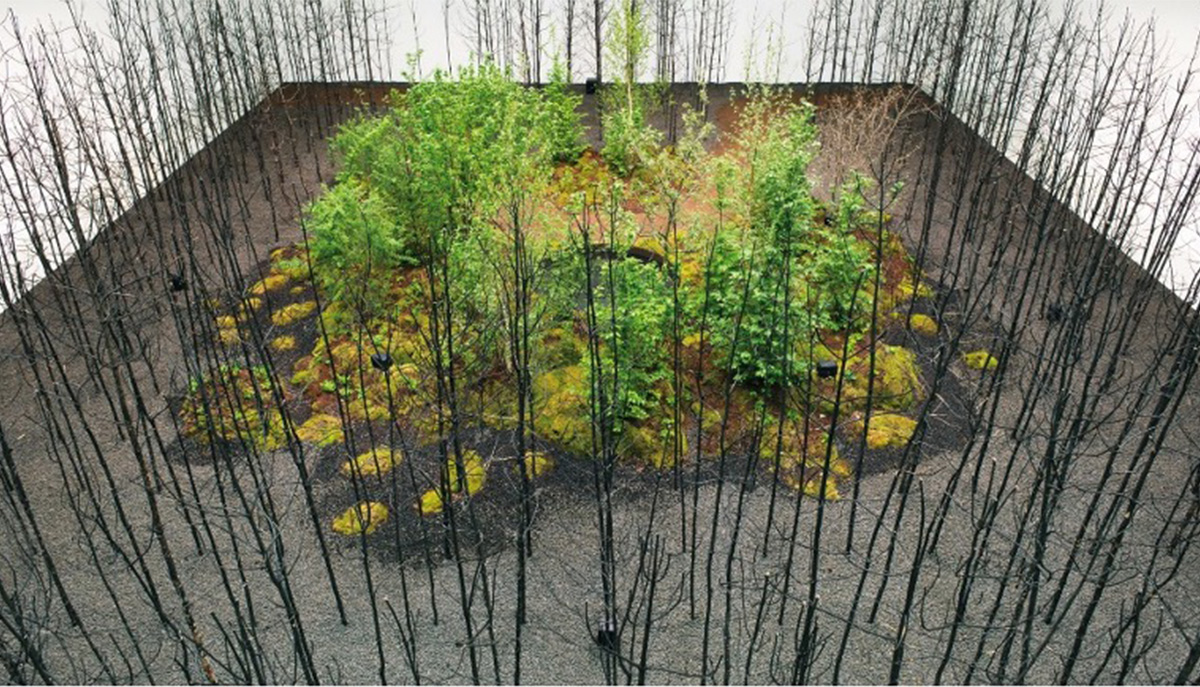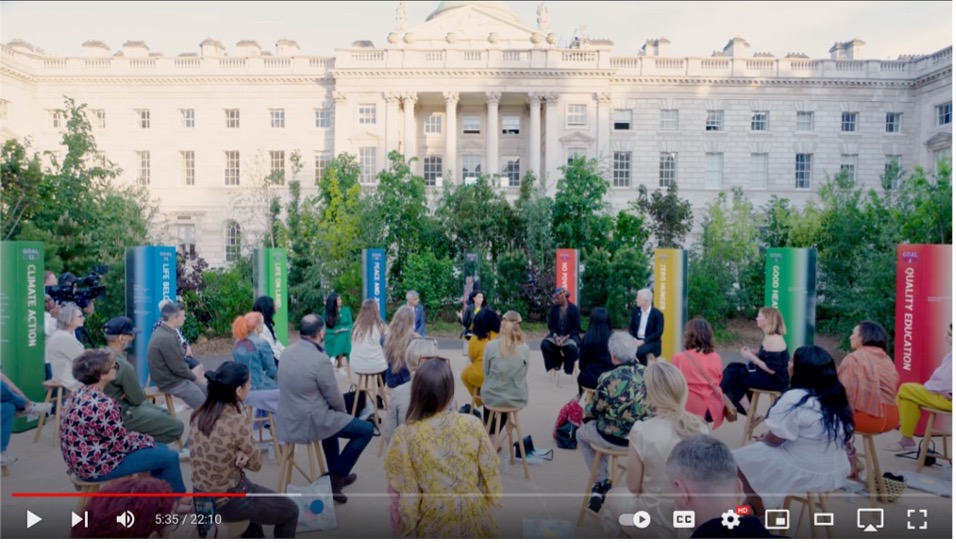I moved to beautiful British Columbia in May 2017 and at that time it was a big pleasure to spend summer here. The summer was not too hot and not too cold. The cool breeze in the evenings pleasantly blew my face every time I went out for a walk, and I felt nice summer rain from time to time. I didn’t want to spend summer anywhere else but staying here, in North Vancouver up until this year.
By 2023 things had changed and those residents, who spent summer in North Vancouver, BC experienced the heatwave and the anomaly of the weather. The province that I came to six years ago looked completely different this summer. By 2023 - the forests were on fire and that brought the smoke to the North Vancouver area, after the grass was burned already in May. I was wearing a mask as the town was covered in smoke and residents were encouraged to stay home, keep the windows closed and drink a lot of water. I remember that tree shade helped me to escape the sunlight at that moment. I realized that urban areas need more trees for oxygen and shade. At that time I wanted to move back to 2017 when summer was cool and rainy. I wanted to escape from the heatwave and smoke. But escaping is not a solution. The solution is to find the causes of the heatwave and wildfire and what we, interaction designers can do to raise the awareness about climate change.One of the solutions can be to launch a climate change campaign. According to Cousins, the Director of Digital Marketing at Designmodo, Interaction designers are people who help “create a design strategy, identify key interactions of the product, create prototypes to test concepts.” (Cousins). We are strategic and creative people and I truly believe that interaction designers are well placed to nurture a community tree planting initiative in urban North Vancouver to highlight a valuable climate change crisis solution.
In June 2023 the Government of British Columbia stated on their website that there were 457 wildfires that burned 869, 861 hectares since April 1, 2023 (The Government of British Columbia). Sounds like a joke on April 1st but unfortunately it is our reality nowadays. The temperature toped 41.4 degrees Celsius, according to CBC News, and it was the highest heatwave recorded by the “Lytton” weather station that led to wildfires across British Columbia “Temperature Tops 40” (CBC News). The closest one to North Vancouver was discovered near Baden Powell Trail, Lynn Canyon on July 17, 2023 (see fig. 1). It was the second wildfire in less than a week in North Vancouver, whereas the first one was on Mount Seymour in the same week (Hasegawa, R.).

What is causing the recent heatwaves in BC? According to the Government of British Columbia website there are two broad causes of the wildfire. One of them is Lightning that causes 60% of the wildfires. Another one is Human activity, such as industrial activity, open burning, vehicle and engine use, fireworks, outdoor flame lightning, sky-lanterns, discarding burning items like cigarettes, and others that cause 40% of wildfires (The Government of British Columbia).
As human beings we cannot control the lightning, but what is under our control is human activity. Interaction designers rely on powerful software and technologies and as a digital designer I am more concerned about how industrial activity, such as manufacturing of technology devices lead to climate change and how? The technology devices are rapidly changing and growing. Based on the chart of infoNewt, Apple corporation releases new phones, laptops, desktop computers, iPads, almost every year depending on the model and type of the product (Infonewt). I believe that each new release of technologies dictates a new trend that most people want to follow. But what might be the consequences of constant demand for new devices? Fawole discussed in his article for the academic journal “Bulletin of the National Research Centre” that the growing and constant demand for new electronic devices and overall short use of them drives the extraction of new metals. It contributes indirectly to “higher energy consumption and associated GHG (greenhouse gases) emissions” (5). It makes the consumers buy new devices and/or replace the old ones that lead to electronic waste or e-waste for short. According to the online Cambridge dictionary e-waste refers to “computers, phones, and other electronic products that are thrown away, because they are old, broken, etc.” (Cambridge Dictionary). Not only the production of new devices causes the climate change, but also the inadequate management of e-waste. According to Fawole:
Other harmful substances contained within e-waste, such as heavy metals and brominated flame retardants, are often released into the environment. Although these substances do not directly contribute to climate change, they pose significant environmental and health risks (Maia et al. 2020. Moreover, the release of these substances can disrupt ecosystems and biodiversity, which can indirectly exacerbate climate change impacts by compromising the resilience of these systems to climate change and their capacity to act as carbon sinks (5).
Interaction designers can raise awareness by taking strategic and creative approaches towards climate change. We need to demonstrate the consequences of the wildfires and the impacts on wildlife and what can be done by us towards a sustainable future. Presenting the burned trees can be one of the ideas to raise the awareness of climate change and some of the designers have already taken the initiative toward this goal. According to India Block, a former assistant editor of Dezeen magazine, five designers highlighted climate change and sustainability by planting trees in major cities of Austria, USA, UK and Italy (Block). One of them was the design studio Superflux that created a forest of over 400 pine blackened pine trees damaged by fire and installed them in the museum of Vienna Biennale. The burned trees were set up around an oasis of “27 living trees, shrubs, mosses, grass and lichen that was planted in the center of the installation around a circular reflective pool” (see fig. 2). The installation was called “Invocation for Hope” at the Museum of Applied Arts in Vienna and it was part of the Vienna Biennale for Change 2021 exhibition which has the theme – Planet Love: Climate Care in the Digital Age (Block).

The burned trees reflect the impact of humans on nature, while the living oasis is a symbol of hope (Block). “Climate change is not a problem we can ‘solve’ but rather a predicament we must navigate with responsibility and urgency”, said the Superflux co-founder, Ana Jain for the Dezeen magazine. She questioned the audience raising the discussion of climate change in the magazine saying "By radically changing our attitude toward natural systems and the ecology of our planet, we have the best chance to reverse the damage we've done. How might we – humans and non-humans – truly engage in collaborative living?” (Block). This was a great example and a way to raise awareness about climate change and the consequences of human intervention.
Another great example of a climate change campaign was done by British designer Es Devlin at London Design Biennale. Devlin filled the courtyard of Somerset House, London with 400 trees for her Forest for Change installation (Carlson). Forest for Change was created in collaboration with landscape designer Phillip Jaffa and Scotscape. The Goal of the installation was to raise the awareness of UN’s Global Goals, which is also known as The Global Goals Pavilion, and the Global Goals are 17 objectives that aim to provide a better world by 2030. The visitors of this campaign could explore the 17 goals that were placed at the center of the clearing and “showcased through quotes and facts on colorful mirrored pillars” (Carlson). This campaign enabled people from different countries, cities, and regions to bring together to have a conversation about what is important through design. The president and Co-Founder of London Design Biennale, John Sorrel, states that Design can solve some world’s biggest problems - “When you get together. People from 30-50 parts of the world start talk to each other, that’s when you really see some magical things happening and that’s happened in both in first and second Biennales and it is really happening brilliantly in this one.” - said the president and Co-Founder of Landon Design Biennale (see fig. 3, Youtube). This example clearly shows that changes and actions only happen when people get together and openly talk about the issues. But do we, interaction designers ever think about the importance of being considerate of the nature and resources we use for designing and creating a product or being considerate of “earth parameters” - as Devlin mentioned on the Global Goals campaign? “What I have brought is an attitude towards parameters. As designers you have set with parameters and you are told - you have this much space, you have this much time, you have this much money. But what we are not told is the earth parameter.” - Es Devlin (YouTube).

These two campaigns gave me an idea of how interaction designers could initiate a tree planting campaign to highlight a climate change crisis solution. I would invite the North Vancouver community for a talk about climate change, the causes of wildfires that happened this Summer, 2023 and discuss the solutions for the climate crisis. We could combine two ideas into one. We could bring the trees to the North Vancouver Shipyard Skate Plaza, which is located right next to the Capilano campus. The trees could be the ones that were burned in the wildfire Lynn Canyon. We could build a small oasis of planted Canopy tree, and in the middle of oasis we could place the chairs for discussion. The burned trees would represent the present – what is happening now, the green Canopy trees would represent the future, and the chairs in the middle would represent the call to action or the invite for discussion of the climate change and the climate solution. I think the North Vancouver Shipyard Skate Plaza is a great place for realizing this initiative. It has enough space to install the burned trees, the oasis of trees and the place the chairs in the middle of it. Moreover, it is the heart of North Vancouver urban area, which is always filled with visitors and residents, especially on weekends.
I think it is a good timing for us to invite the community for a conversation about climate change. North Shore News reporter Nick Laba found out for his article “North Vancouver to Expand City’s Canopy with Urban Forest Plan” that residents are strongly connected to urban forests and the City of North Vancouver has started planting Canopy seeds, which means that there is a need for climate change campaigns and discussions (Laba). Moreover, there are more and more construction projects happening in North Vancouver and the residents, who live here for a long time are raising the issue of tree cutting for construction purposes. “Trees have been lost to natural causes, like hemlock looper moths, as well as city growth including the development of housing, upgrading utilities, and expanding transportation options. These losses have been offset by North Vancouver’s urban forestry initiatives and the planting of young trees as part of new development” - said the environmental sustainability manager, Mike Friesen for the North Shore News (Laba). However, Laba stated in his article that the City of North Vancouver already started to plant Canopy trees so the residents will have a good population of trees in “the next 30 years and beyond” (Laba).
Canopy trees have a lot of advantages that would benefit North Vancouver city and provide more oxygen and shades. According to Lowman and Rinker, Canopies occur in different varieties of shapes, sizes, complexity, structures, and species. They have different appearance and functions depending on the location they habitat. They also differ in phenology, pollinator, and seed dispersal mechanisms. But despite all of that, they share some attributes in terms of function and structure. The inside interior of the canopy forest is always dark, moist, still, and quiet. Moreover, Canopies can modify the average values of temperature, wind speed, humidity, light, and sound (7-8).
Therefore, I think that it is crucial to plant Canopy trees in urban area of North Vancouver to protect the streets from “incoming sunlight, hot temperature and wind” (Lowman and Rinker) and support the government to plant the trees. But I believe that planting the trees in urban area of North Vancouver is not enough. Even though the North Vancouver municipal government started to plant the Canopy trees in urban area of North Vancouver, it is still worth it to not only plant the trees but initiate the tree planting campaign. We can invite the residents for discussion and find the solution to the heatwave and wildfires that happened in summer, 2023. In order to continue the conversation about the climate change we need to create a certain environment. I believe that certain environment will help for visitors and residents to be more open minded and face with the consequences of the wildfire and embrace the changes we need to make to protect our collective future. We need to bring the burned trees to the North Vancouver Shipyard Skate Plaza so residents and visitors will face the problem that happened in summer, 2023 and it keep in mind there is still a high chance it will happen again in Summer, 2024. We can build the oasis of Canopy trees to give a feeling of hope and place the chairs in the middle as a call to action and discussion. It will lead to the idea that the wildfire is not that far from us but the bright future with green trees is near if we all gather, sit, discuss, and try to find the solution. Humanity needs to take an action and responsibility for the consequences of the wildfire and we, Interaction Designers are well placed and capable of organizing that because we are skilled to be strategic and creative.
Bibliography
Block, I. “Five Designers Planting Trees to Highlight Climate Change.” Dezeen, 17 June, 2021.
Cousins, C. “What is Interaction Designer?” Designmodo, 2023.
InfoNewt. “Visualizing Apple Product Release Patterns.”, 20 January, 2023.
Johnson, M, Trees in Towns and Cities: A History of British Urban Arboriculture. JSTOR, 2015.
London Design Biennale. “London Design Biennale 2021 - Tour”. YouTube. 4 January 2022.
Lowman, M. D, Rinker, B. H, eds. Forest Canopies, 2nd ed, Amsterdam: Academic P, 2004.
Simard, S. Finding the mother tree: discovering the wisdom of the forest. Allen Lane Canada, 2021.
The Government of British Columbia. “What causes the wildfire.”
The Government of British Columbia. “Understanding the 2023 Season So Far”, 2023.
The pine trees burned in the wildfire with the oasis in the centre.2021. Dezeen.